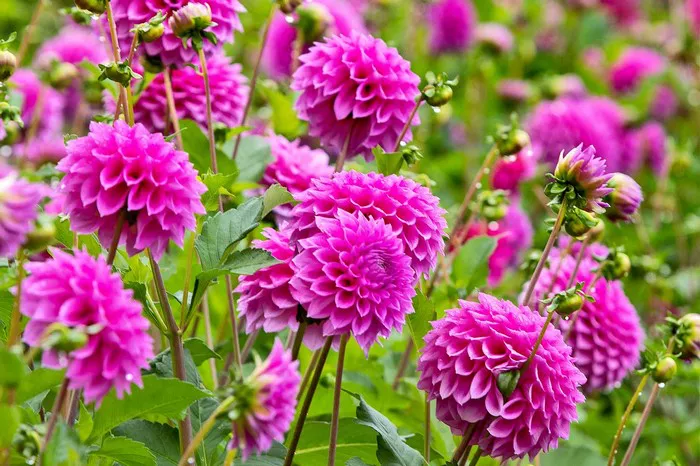Dahlias, with their vibrant colors and intricate petal formations, are a gardener’s delight. These stunning blooms come in a myriad of shapes and sizes, adding a burst of color to gardens, bouquets, and floral arrangements. However, as ephemeral as their beauty may seem, it is possible to preserve these delicate flowers for posterity through the art of pressing. In this comprehensive guide, we will delve into the fascinating world of pressing dahlia flowers, exploring various methods, step-by-step instructions, and valuable tips to ensure successful preservation.
Introduction of Dahlia Flower
Before diving into the pressing process, it’s essential to appreciate the beauty and intricacy of the dahlia flower. Native to Mexico and Central America, dahlias belong to the Asteraceae family, which includes sunflowers and daisies. These enchanting flowers are known for their diverse array of colors, ranging from vibrant reds and oranges to soft pastels and even deep purples.
One of the most striking features of dahlias is their varied petal shapes, which can range from the classic ball form to intricate, spiky designs reminiscent of fireworks. With over 42 species and thousands of cultivars, dahlias offer endless possibilities for gardeners and floral enthusiasts alike.
Dahlias thrive in well-drained soil and require ample sunlight to flourish. Depending on the variety, they can be grown as perennials or annuals, gracing gardens with their stunning blooms from summer through fall. Whether used as focal points in flower beds, cut for bouquets, or showcased in floral competitions, dahlias never fail to captivate with their beauty and charm.
Methods of Pressing a Dahlia Flower
Pressing flowers is an ancient art form that dates back centuries, allowing individuals to preserve the fleeting beauty of blooms for future generations to admire. When it comes to pressing dahlia flowers, several methods can be employed, each with its unique advantages and considerations. Here are some popular techniques:
1. Traditional Pressing: This method involves placing flowers between the pages of a heavy book or flower press and allowing them to dry over time. To prevent moisture buildup and promote even drying, it’s crucial to use absorbent paper, such as blotting paper or parchment, between the layers of flowers.
2. Microwave Pressing: For those seeking a quicker alternative, microwave pressing offers a speedy way to preserve flowers without sacrificing quality. This method involves sandwiching the flowers between layers of absorbent paper and microwaving them in short intervals to remove moisture effectively.
3. Silica Gel Drying: Silica gel is a desiccant that absorbs moisture, making it an ideal material for drying flowers quickly and preserving their color and shape. To use silica gel for pressing dahlias, simply bury the flowers in a container filled with silica gel and wait for them to dry completely.
4. Air Drying: This method involves hanging dahlias upside down in a dry, well-ventilated area until they have dried completely. While air drying may take longer than other methods, it requires minimal equipment and preserves the natural shape of the flowers.
A Step-by-Step Guide to Pressing a Dahlia Flower
Now that we’ve explored the various methods of pressing dahlia flowers, let’s delve into a step-by-step guide to traditional pressing, one of the most popular and accessible techniques:
Step 1: Gather Your Materials
Freshly picked dahlia flowers
Heavy books or a flower press
Absorbent paper (blotting paper, parchment, or newspaper)
Cardboard or stiff paper for support
Step 2: Prepare the Flowers
Select dahlia blooms at their peak freshness, preferably in the morning when they are fully hydrated.
Gently remove any excess foliage and trim the stems to the desired length, leaving about an inch for handling.
Step 3: Arrange the Flowers
Open a heavy book or flower press and line the pages with absorbent paper.
Arrange the dahlia flowers on the paper, making sure they are not overlapping or touching each other.
Place additional layers of absorbent paper between each layer of flowers to promote even drying.
Step 4: Press the Flowers
Close the book or flower press carefully, applying even pressure to flatten the flowers.
If using a book, stack additional weight on top to ensure sufficient pressure for pressing.
Leave the flowers undisturbed for 1-2 weeks to allow them to dry completely.
Step 5: Check the Flowers
After the drying period, carefully open the book or flower press and gently remove the pressed flowers.
Inspect the dahlias for any remaining moisture or signs of mold. If necessary, replace the absorbent paper and continue drying for additional time.
Step 6: Store the Pressed Flowers
Once fully dried, carefully transfer the pressed dahlias to a clean, dry container for storage.
Store the pressed flowers in a cool, dark place away from moisture and direct sunlight to prevent fading or discoloration.
Tips for Pressing Dahlia Flowers
While pressing dahlia flowers is a relatively straightforward process, there are several tips and tricks to ensure optimal results:
Choose dahlias with sturdy petals and vibrant colors for the best preservation outcomes.
Press multiple flowers of the same size and shape together to create symmetrical arrangements.
Experiment with different pressing techniques to find the method that works best for your preferences and timeframe.
Avoid pressing dahlias that are overly mature or starting to wilt, as they may not retain their shape or color effectively.
Use caution when handling pressed flowers, as they can be delicate and prone to breakage.
Consider incorporating pressed dahlias into various art and craft projects, such as greeting cards, framed displays, or botanical journals.
Conclusion
By following these guidelines and techniques, you can successfully preserve the beauty of dahlia flowers and enjoy their splendor for years to come. Whether you’re a seasoned gardener, a flower enthusiast, or simply someone who appreciates the wonders of nature, pressing dahlias offers a delightful way to capture the essence of these exquisite blooms and cherish them for eternity.


